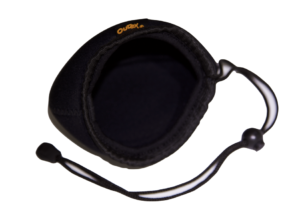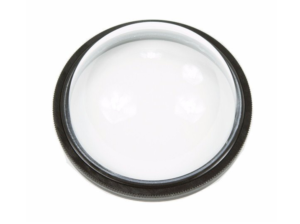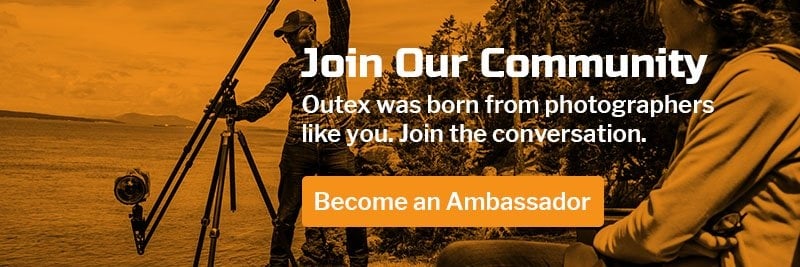Difference between dome vs. flat ports for underwater images

Domes are ideal for underwater and split-level (half over/under) photography, because they correct for aberrations that occur as light travels at different speeds above and below water. Outex ports, including domes, are made of optical glass.
These examples illustrate some common issues addressed in this entry. We get into additional detail below. Photo below using Outex Pro Kit + Dome 180mm

Outex Pro Kit flat vs. dome optical glass ports side by side comparison. Outex dome ports come pre-packaged in a neoprene protective case to help store and protect them.

As with most things in image-capture, there are a number of factors that influence the results, including the camera, lens, focal length, the settings used, lighting intensity & angle, composition, distances between the camera & subjects in the composed frame, as well as the clarity & opacity of the water.
There's no right or wrong when it comes to photography or cinematography. Only desired outcomes, and the creator's ability to execute/achieve that vision or objective. The Outex system is designed with that in mind. The system is modular, and allows you to use domes or flat ports interchangeably, depending on what you'd like to accomplish. You can learn about the benefits of the domes in other entries of our Questions/FAQ page. For example, here.
Dome Size Difference Summary
- Domes make it better; Domes help correct aberrations that occur when light changes speed as it travels from air into water. This "bending" of light that occurs can create optical distortions where objects appear broken or discontinuous above vs. below water. Domes also help reduce the magnification that occurs underwater, repairing that continuity from above to below the water.
- Size matters; Bigger domes are better than smaller domes, for a number of reasons. In short, larger domes create more separation between the camera sense, lens, and waterline, further alleviating distortions for the equipment. In pushes the water further away as well, circumventing certain lenses' minimum focal length restrictions and reducing virtual image limitations. You can look up virtual image online, but in short, certain lenses require a minimal focal distance, and that distance can only be achieve if the dome is large enough. The tradeoffs for larger domes are; it's heavier, bulkier, and pricier than its smaller counterparts, or flat ports. The smaller dome gives you great value and transportability.
- Focal length matters; Using very long focal lengths are not practical underwater for a number of reasons. There's magnification anyway, that makes submerged objects appear closer/larger to begin with. And the user will also be fighting water clarity, opacity, and lighting, all of which play a much larger role underwater. So while Outex allows you to use virtually any lens underwater, and is designed to match/pair the dome's position at each lenses optimal place, we recommend you use wider, shorter-focal-lenghts for your underwater work.
- Glass is optically superior; Glass domes are optically superior to plastic or acrylic, and they do not scratch as easily. All of the Outex ports, including its domes, are American or European made glass.
- Universal fit protects your investment; Both Outex glass domes are designed to fit any/all lenses thru adaptors, which fit lens with filter threads, and clamps, which attach to unthreaded, hooded, or fisheye lenses. This design protects your investment over time, because the ports are universal, and you can add additional clamps or adaptors as you change/add lenses in your arsenal over time, even for lenses that don't yet exist. It's also engineered to optimize optical placement around the fitted lens in use. Many housings have a fixed dome and your lens "floats" inside it, which means you may have vignetting or other impediments during use. Outex's adaptors and clamps anchor to the camera and the lens, and position the Dome where you are guaranteed not to vignette, and where your optical capabilities are optimized for that particular lens. It borrow's from that lenses physical characteristics, such as filter thread positioning, fixed hood, and size, to determine the optimal position of the Outex dome around it. It still allows you some control, but does most of the work for you.
- Domes are ideal for split level and underwater use; While dome ports will not take anything away from your work above water, their impact or difference above the surface is irrelevant. So the additional weight and bulk makes the flat port a much better solution on land, rain, mist, etc. Domes can also adhere to water in unpredictable ways. That difference is why we also treat our dome vs. flat ports differently at manufacturing. Both are tempered glass. Our flat ports are also nano coated with an oleophobic & hydrophobic film to reduce water cohesion and droplets from sticking to the lens. You can learn more about dealing with water drops and adhesion to the port in a different entry on our Questions page here.
For additional information explore other entries on our website on this subject.
Difference Between Dome vs. Flat Glass Ports
Flat lenses are comparitively inexpensive, smaller, and lighter than dome ports, and they work well underwater, just as they do above water. But they have physical limitations underwater, and those limitations are exacerbated when trying to capture split level (over/under) shots. Outex is one of the only manufacturers offering glass ports (not plastic or acrylic), which is optically superior in both conditions. Both flat and dome Outex lenses are made of American or European professional-grade glass. And as most of the Outex underwater photography system, our lenses, both flat and domes, are modular and compatible with all of the housings/covers, and accessories.
All of the Outex flat lenses screw onto your lens' filter thread (just like a UV filter or polarizer) and can work with any lens. But some lenses, such as unthreaded, fisheye, or hooded lenses do not accommodate a filter thread and often have curved lenses in the front. Those require one of the Outex dome ports. Both Outex domes work with any lens in the market, past, present, and future, because the domes are designed to be universal, and anchor to specific lenses thru adaptors or clamps.
Outex dome adaptors match the lens filter thread size, just like our flat ports would. We support all thread sizes.
Outex dome clamps anchor to the lens thru an adjustable clamp, and connect to the dome to optimize optical properties based on placement, as well as maximize stability as an additional anchoring point within the housing/cover.
The two Domes use different adaptors and clamps engineered to optimize optics and usability of each. And both are available in Accessories as kits (bundles of products) as well as in Parts where you can purchase all of our products independently. You just use different adaptors or clamps over time as you needs evolve.
Using Dome 120mm vs. the Dome 180mm is not a definitive difference maker, just as using different lenses. As explained above, the larger dome increases the variety, frequency, and compatibility of your use with your camera, lens, and set of conditions. In other words, the larger dome make it easier to "get the shot" more often, regardless of what equipment you're using, and the conditions. The smaller, more travel friendly, more affordable dome can yield the same desired outcomes. But it may force you to work "harder at it" - meaning a "more controlled" set of variables like camera, lens, focal length, setting, proximity to subject, lighting, lighting type, framing, composition, etc. And that difference is exacerbated for split level (over/under) work.
See examples below by Pros Paul Toma and John Starret. The images below all use the smaller Outex Dome 120mm.
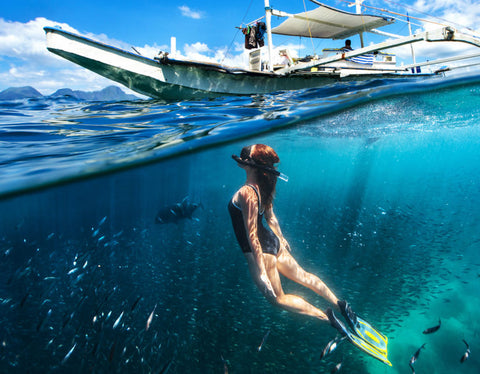

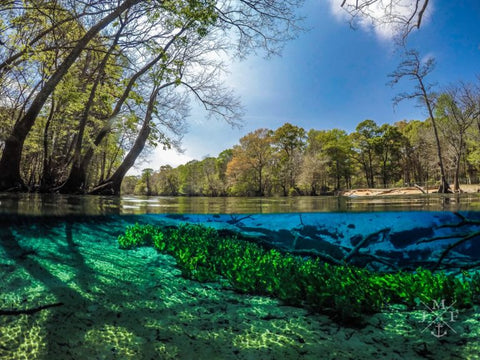
Dome lenses are ideally suited for wide-angle lenses. As with most things photography, there's no line or cut-off number. Everything is on a spectrum. In general, we mean focal lengths below 24mm , which are ideal for a number of reasons related not just to optics, but water, such as clarity, white balance, lighting, etc. We’ll explain each in more detail below.
Split Level (Over/Under) Focus
Because of many of the differences already highlighted above, there are complexities in defining focus on split level (over/under) images. By definition optical properties over the two mediums are different, so the camera operator can use the gear to help her decide how to create the image based on desired outcomes. The two images below highlight the differences. Both taken with Canon 6D full frame camera and Sigma 12-24mm f/4 lens. The 1st using the Dome 120mm, and the 2nd with the Dome 180mm.
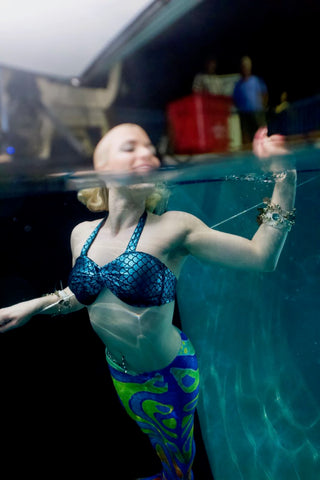

Most of the settings, including depth of field, composition, framing, etc are similar, and both focal points are positioned (on "M" manual settings) to be underwater, lighting and the larger dome greatly assist in maintaining greater focal "parity" above and below water level.
Depth of field is critical tool in modulating over & under parity if that's the desired result. Use it accordingly. But over and under disparity can also be used to your advantage. In the example below the disparity between the two water levels only helps the author illustrate the story being told in the photo.

Refraction; Image is not as magnified due to the refraction of light in the water. Refraction is the visual bending that results from the change in density and therefore changes in light speed as it crosses from air to water. Refraction occurs when the light changes speed when it enters a body of water, causing it to change direction. The subject becomes ¼ closer and 1/3 bigger. See the pencil image below.


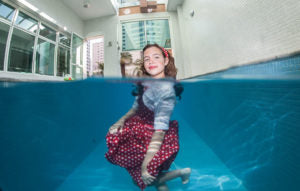
Note again the excellent results with both the regular lens as well as the dome port photos above.
Sharpness & Chromatic Aberration
Another benefit of domes in water is improved color and sharpness retention since you can be closer to the subject and therefore create less distortion. Flat lenses create a progressive distortion away from the center of the image as they do not address the progressive refraction near the edges. That also means a dome port makes it easier to find focus throughout the frame. Similarly, it reduces
chromatic aberration (color fringing), as the same refraction impacts not only light but color, as the light separates into the spectrum’s component colors away from center. Dome ports help correct light dissipation over distance, helping ensure a more evenly sharp, focused, and color-correct image.
Outex dome ports come pre-packaged in a neoprene protective case to help store and protect them.
